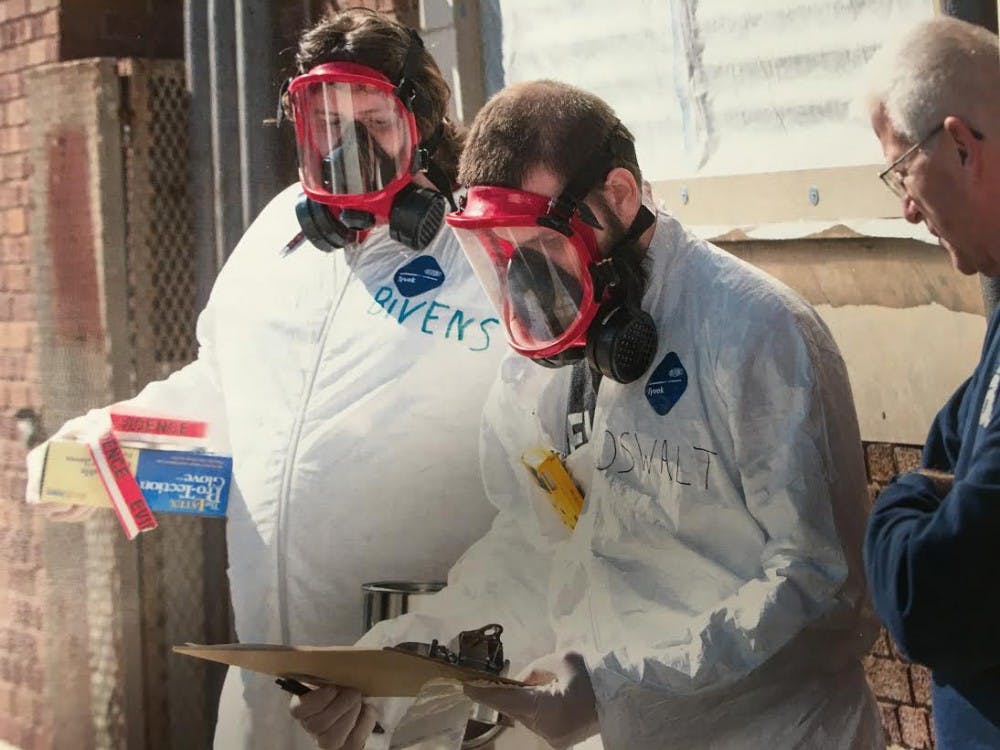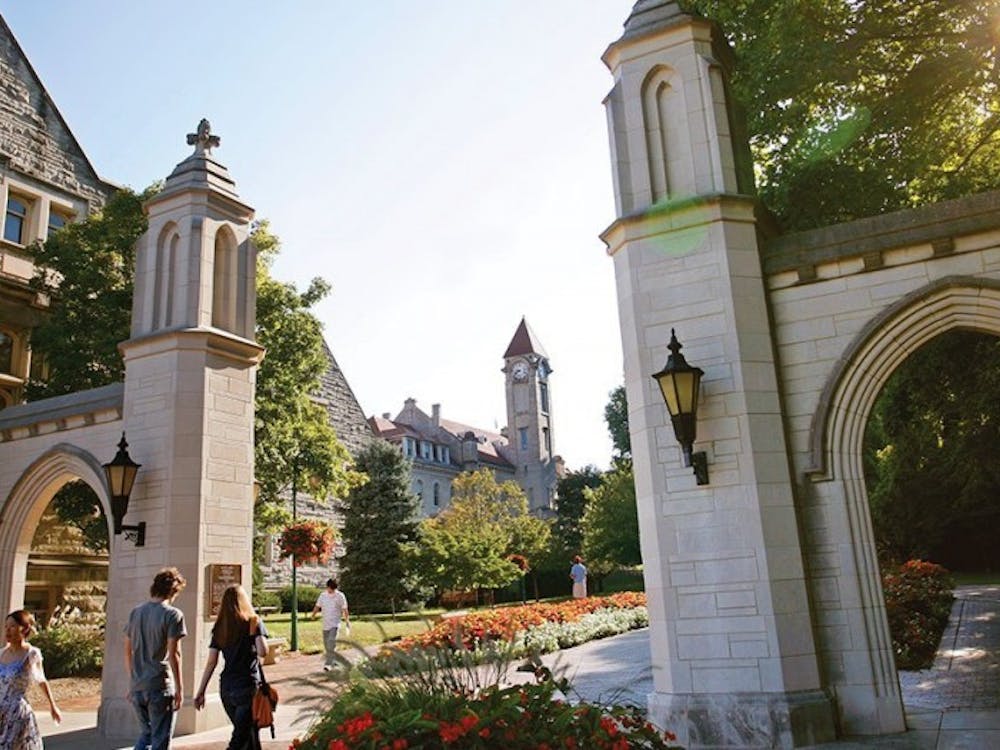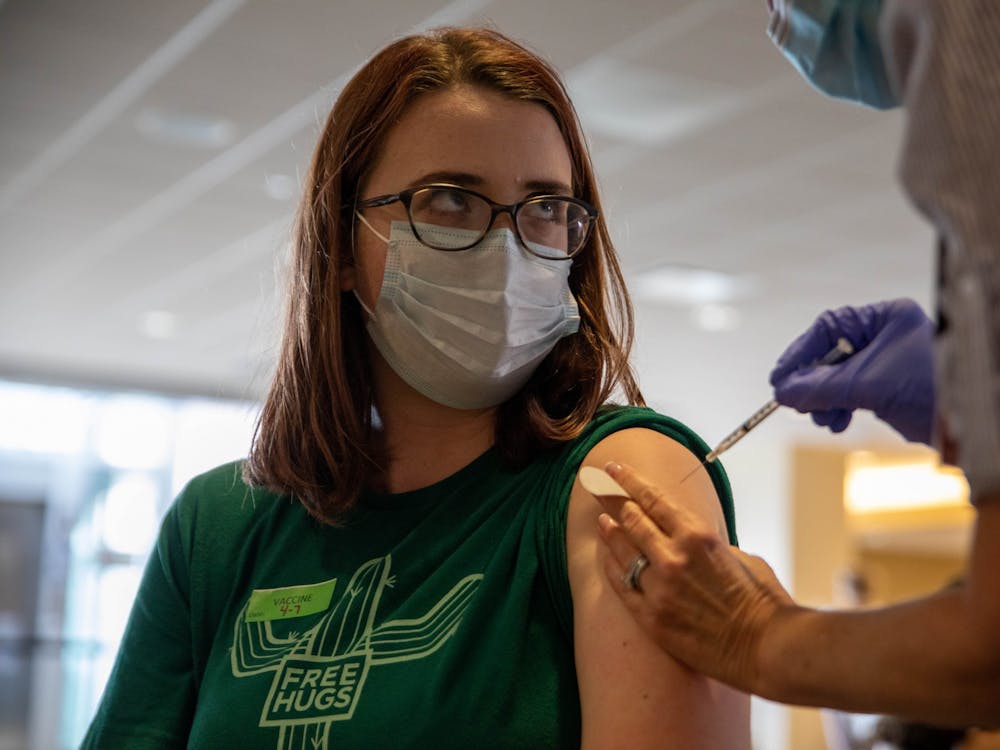Students from an arson investigation class had a chance to put their training to the test during a simulation on March 29.
The environment management course required students to assess the scene of an actual fire to determine if the flames began as an intentional or accidental fire. Students were divided into teams with goals of documenting the scene, observing fire patterns and collecting evidence and fingerprints.
"I tried my best to be invisible throughout the investigation process," said John Pichtell, a natural resources and environmental management professor. "These students worked and studied the science behind a fire — this was their chance to put what they've learned to the test."
The mock room was constructed outside of the city limits — where a permit to burn was not required — and set aflame, Pichtell said. Students did not observe the fire, and the room was reconstructed next to the Heat Plant before the investigation began.
"Once the students arrived, they were on an investigation to find out what had happened and how the fire spread," Pichtell said.
Acting as the Incident Commander during the investigation, junior geography major and volunteer firefighter Justin Parsons said he took the class because he thought it would help him develop new skills in the field and potentially add to his knowledge in the EMS field.
"I coordinated everything that went on at the scene and made sure that all of the tasks that needed to be completed were completed safely in a timely and efficient manner," Parsons said. "At first it was a little chaotic, but this was definitely not my first time in a leadership position ... I knew how to take control of everything and how to get everyone where they needed to be."
Parsons said fortunately, nothing unexpected happened.
"I was definitely prepared for something to go wrong; I had a few contingency plans ready if things went south," Parsons said. "But everyone's role was assigned prior to the field day, so everyone knew what was expected of them and we executed those duties rather well."
During the investigation, students collected evidence according to National Fire Protection Agency requirements for eventual laboratory analysis.
"I think this was an excellent learning experience for me," Parsons said. "It was a great way to build upon my skills in leadership, and it is always a great confidence booster when you can take a large group of people and get them to come together and get the job done efficiently and effectively. I think everyone did a great job."
After the arson study is complete, the students will pull together all of the documents, evidence, photos and anything else used at the scene and put together a final report to determine the origin and cause of the fire, Parsons said. After that, the class will also prepare for a mock trial.
"It was a great experience for the students to conduct the investigation themselves using the proper equipment, and it helped them to better understand how to catch criminals in incidents of arson," Pichtell said.
Indiana Deputy Chief Fire Marshal Jim Greeson was also at the mock investigation, Pichtell said.
In 2013, U.S. fire departments responded to an estimated 369,500 home structure fires, according to the NFPA. These fires caused 2,755 deaths, 12,200 civilian injuries and $7 billion in direct damage, killing an average of eight people every day.





